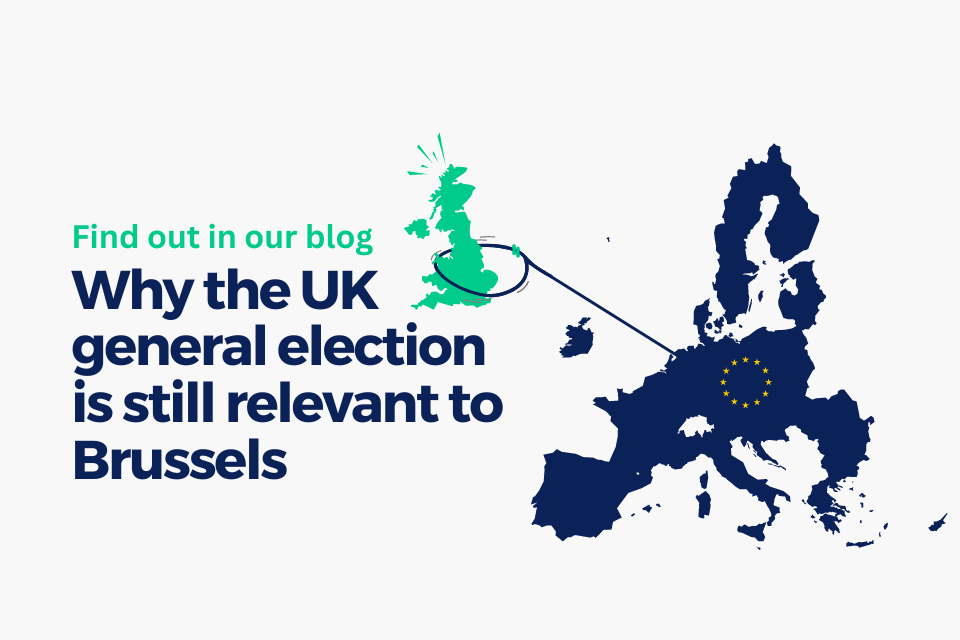Revision of the Electricity Market Design: 5 Things You Need to Know
Yesterday, the Commission proposed measures to amend the EU’s electricity market design. The draft regulation’s aim is to address the exceptionally high energy prices and send stronger signals for investments in renewables and flexibility. The controversial proposals come only four years after the last major market design revision as part of the ‘Clean Energy for All Europeans’ Package.
Why is the market design up for discussion again so soon? The uptick in energy demand as economies recovered from the COVID-19 lockdowns and the EU’s efforts to reduce reliance on Russian gas have led to painfully high power prices. Wholesale electricity prices increased over 500% between January 2021 and June 2022, squeezing consumers and industry and pressuring policymakers to act. Meanwhile, the EU has raised the level of ambition on renewable energy deployment to help wean the EU off Russian fossil fuels.
Initially, the Commission and most Member States were reluctant to reopen the debate on the market design, which is highly contentious and complex. By mid-2022, however, energy prices were so high that many Member States and industry stakeholders voiced that they were in favour of a redesign.
Yesterday’s proposals are less extensive than the “deep and comprehensive reform” promised by Commission President Ursula von der Leyen in her State of the Union address in September 2022, but will nonetheless be an important step in the EU’s market design evolution.
Here are five key things you need to know about the Commission’s proposals.
1. There is a major debate about the extent and timing of the redesign
While EU policymakers and industry broadly agree on the need to fix the shortcomings in the electricity market, there are major disagreements about the timing and scope of the revision. The Commission initially supported a bigger revamp but has ended up issuing proposals for a relatively minor reform to be finalized by early 2024 ahead of the EU elections. Spain, France, and Italy, on the other hand, have called for deeper reform of the market design within this timeframe to amend the marginal pricing model, for instance.
Germany, Denmark, Luxembourg, and the Netherlands have cautioned against significant changes, arguing that long-term measures should not be made in the midst of an energy crisis. They have lamented the lack of an impact assessment and extensive stakeholder consultations to inform the market design revision. Germany and Ireland have expressed their support both for a speedy but minor reform (as proposed by the Commission) and for a more complete overhaul to be presented after the EU elections.
Consensus appears to be growing that a two-stage process is needed: a relatively quick revision addressing key elements ahead of the elections in 2024, followed by a more extensive market design revision in 2025. Although this is not reflected in the Commission’s proposals, this will likely be the approach that will be taken.
2. Long-term investment signals are a top priority
When the last electricity market reform was underway, the focus was on strengthening short-term electricity market signals, while long-term contracts were discouraged. However, the past years have shown that short-term market signals are not enough to incentivize the needed investments in low-carbon electricity generation and flexibility. Security of supply is now a much bigger concern as the EU seeks to wean itself off Russian fossil fuels while struggling to ramp up renewable deployment.
The Commission’s market design proposals encourage Member States to facilitate power purchase agreements (PPAs) and mandate two-way Contracts for Difference (CfDs) as the only type of direct support scheme from Member States for all new low-carbon generation including wind, solar, and nuclear. Together, PPAs and CfDs should create long-term investment certainty that will help accelerate renewable build-out.
While most Member States and industry stakeholders support PPAs and CfDs, we can expect significant discussion on whether they should be mandatory, apply retroactively, and to which technologies they should apply. Moreover, we can expect continued discussion on the need for capacity mechanisms and how they should be designed to ensure security of supply without distorting market signals and channelling subsidies to fossil fuel generation.
3. Energy storage is getting more support – but will it be enough?
The Clean Energy Package included energy storage in European energy law for the first time. Although the package put forward a definition of storage as well as basic principles to reduce barriers to deployment, the Commission has been curiously reluctant to put forward more ambitious energy storage policy. While the Commission has proposed strategies and targets for technologies such as hydrogen and solar PV, it has ignored a call from the European Parliament to define a comprehensive EU energy storage strategy. The Commission’s REPowerEU plan also snubbed energy storage, proposing a ramp-up in renewable deployment as a one-to-one replacement for fossil fuel generation instead.
The Commission is now sending a stronger signal in support of storage deployment, publishing the market design files together with recommendations to Member States on energy storage and a staff working document. There is a clear recognition that ramping up renewable energy requires more energy storage and demand response to ensure smooth system operation and security of supply.
The market design proposal calls on Member States to assess flexibility needs every two years for a five-year period and to define ‘indicative’ targets for energy storage and demand response. However, the Commission has decided not to define an EU-wide storage target, as previously done for renewables, hydrogen, and other technologies. In addition, Member States are required to consider demand response and storage within capacity mechanisms. If no capacity mechanism is in place, Member States may introduce ‘flexibility support schemes’ for energy storage and demand response.
These measures are likely to be supported by Member States and particularly the European Parliament, who have clearly accepted the need for more flexibility in the system to counter price volatility, safeguard security of supply, and facilitate system operation. However, many will be asking whether these measures are sufficient to increase storage to the levels that will be required to cost-effectively integrate renewable electricity into the system.
4. Consumer protection is getting a boost
The Clean Energy Package sought to place consumers at the centre of the energy transition. It aimed to ensure that consumers could benefit from increased competition and introduced the right for all consumers to opt for dynamic electricity price contracts.
Dynamic prices should incentivize demand response among consumers. However, the energy crisis and war in Ukraine showed the downside of exposing consumers to energy price spikes: high electricity bills, especially for consumers who cannot afford to invest in their own solar PV generation or storage.
In order to enhance consumer protection and strengthen consumer rights, the revamp therefore proposes the right to fixed electricity pricing contracts. Consumers will have a choice between stable, long-term prices or a dynamic price contract. Additionally, the Commission also introduces the possibility of regulated retail prices for (vulnerable) households and SMEs when a new crisis occurs.
In a way, the proposed revision therefore counters some of the market liberalization measures that were proposed under the CEP to enhance consumer protection. However, opinions on this approach are divided. DG COMP, the EU Commission Directorate General for Competition policy, for instance, reportedly argued in the interservice consultation that the proposed approach might lead to higher electricity prices.
5. The end of technology neutrality?
Although according to the TFEU, Member States still have the right to decide on their own electricity mix, it the EU is arguably moving away from this ‘technology neutral’ approach as renewables and certain types of low-carbon technologies are increasingly being incentivized through subsidy schemes and flexible state aid rules.
This tendency is reflected in the EMD proposal, where the Commission specifies which electricity generation technologies can be supported through two-way Contracts for Difference (CfD) (i.e. solar, wind, hydro, geothermal and nuclear) and specifically dictates that Power Purchasing Agreements (PPAs) cannot be used for the purchase of fossil electricity. Additionally, only flexible, fossil free technologies in line with the Guidelines on State Aid for climate, environmental protection, and energy can participate in capacity mechanisms.
Policymakers are divided however over which technologies (specifically nuclear power) should be incentivized through these different support measures. France is increasingly vocal about the need for EU energy policy to explicitly support nuclear energy. Together with Poland and other pro-nuclear countries, France is pushing for nuclear to be accepted as a green technology. At the same time, other EU countries, such as Germany, strongly oppose this idea. In parallel to the market design, the Commission is proposing a Net-Zero Industry Act (to be published 16 March) which will support the manufacturing of certain clean energy technologies in the EU. There is significant debate within the Commission about whether or not nuclear energy should be supported.
What’s next for the market design?
With the Commission’s proposal finally on the table, negotiations, instead of speculations, can finally kick off. Disputes among Member States, MEPs, and industry stakeholders are already apparent on different issues, however: mandatory or voluntary PPA and CfDs; whether measures should support specific technologies; and how best to shield consumers from volatile electricity prices. These issues promise to be at the center of the discussions. Within the next few months, it will become clear what direction the revision will take, and if a second, deeper market design rethink will be the headline initiative for the next European Commission.
Authors:
Brittney Elzarei is an Account Director at Acumen Public Affairs, advising clients on EU energy and climate policy. Working in Brussels for over a decade, Brittney has supported industry associations, NGOs, multinational companies, and scale-ups in developing and implementing winning public affairs strategies.
Anneleen Ghekiere is a Senior Account Manager at Acumen Public Affairs, advising clients on wide range of climate, energy, and mobility issues and supporting them on the road towards net zero through the development and execution of targeted EU public affairs strategies.


